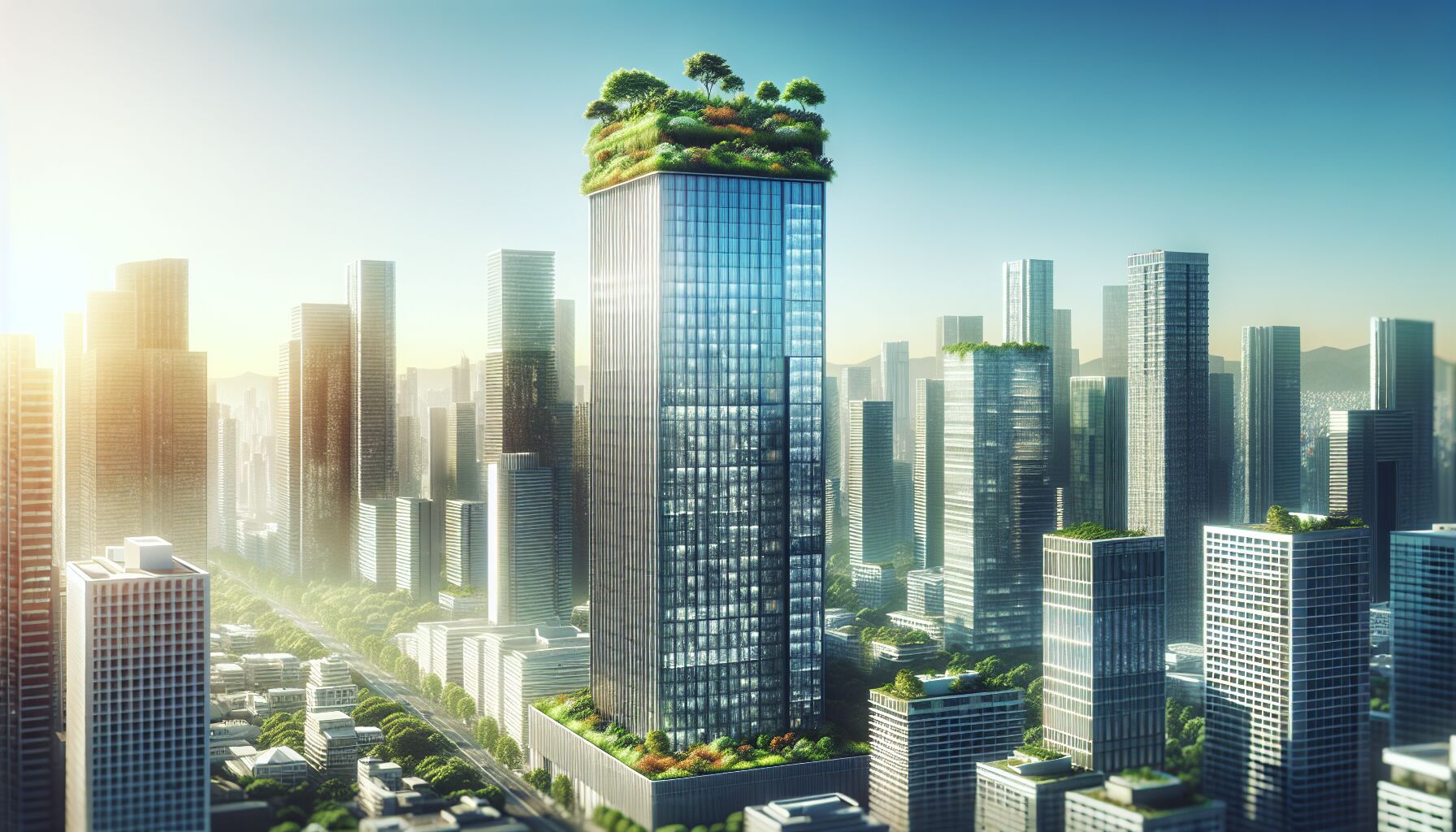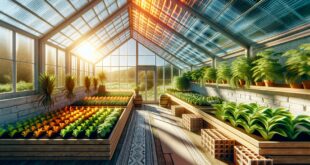 Urban heat islands — an evocative term that’s about more than just a hot patch in the city. It’s about understanding a dynamic interplay between human habitation and nature’s rhythms. Imagine the city’s concrete structures absorbing heat during the day, only to release it slowly at night. This process creates a veritable hotspot, the urban heat island effect, impacting everything from our daily comfort to the planet’s health.
Urban heat islands — an evocative term that’s about more than just a hot patch in the city. It’s about understanding a dynamic interplay between human habitation and nature’s rhythms. Imagine the city’s concrete structures absorbing heat during the day, only to release it slowly at night. This process creates a veritable hotspot, the urban heat island effect, impacting everything from our daily comfort to the planet’s health.
You might wonder, why do cities get hotter than their rural counterparts? The key lies in how urban environments are constructed and used. Buildings, roads, and other infrastructure absorb and re-emit the sun’s warmth more than forests or bodies of water. Throw in human activities — cars, factories, air conditioning units — and you’ve got yourself a recipe for a warm city soup that rarely cools down, especially on sweltering summer nights.
Now, bet you’re thinking, how does all this affect energy consumption? For starters, there’s an increased demand for air conditioning, resulting in higher electricity usage. This, in turn, leads to more energy production, often from fossil fuels, which contributes to the overarching dilemma of climate change. It’s a cycle — more heat, more energy use, and more emissions. This cycle isn’t just a concern for our wallets but for our wellness as well.
But here’s the thing, while urban heat islands pose a challenge, they also open doors for innovation in climate adaptation. Cities worldwide are embracing cooling strategies that not only combat heat but also blend harmoniously with urban living. Green roofs, reflective pavements, and urban trees are showing promise as cooling heroes, offering shade, lowering temperatures, and even improving air quality. It’s like having nature slip back into the crevices of our concrete jungle, quietly yet powerfully.
“The future belongs to those who understand that doing more with less is compassionate, prosperous, and enduringly fruitful.” — A lesson our heat islands have taught us.
These strategies aren’t just about addressing elevated temperatures but also about nurturing a deeper relationship with our environment. By incorporating sustainable methods, we’re not just cooling our living spaces; we’re cultivating a stewardship that honors the interconnected weave of our ecosystems.
For those yearning to make a difference, remember: impacting urban heat islands starts small, like planting a single tree or supporting policies for more green spaces. It’s a symbiotic dance — every step impacting the rhythm of the entire city. And because we’re all connected, each mindful action contributes to a larger story of harmony and mindful living.
For anyone navigating the labyrinth of urban landscapes, these heat islands offer a chance to rethink and reshape our legacy. Is it time we all reevaluate our relationship with the spaces we call home? If so, where might your journey begin?
Effects on energy consumption
Imagine the relentless hum of air conditioners during a heatwave. That buzz signifies a desperate attempt to reclaim comfort within our urban sanctuaries. Urban heat islands exacerbate this need, pushing our air conditioning units into overdrive and spiking energy consumption. It’s as if the city itself demands more — more energy, more cooling, more resources.
Now, here’s an interesting thought: how much energy do these heat islands truly devour? According to the U.S. Department of Energy, urban areas can be up to 7°F warmer than their rural neighbors, leading to a substantial increase in electricity demand — up to several percentage points during peak summer months. It’s not just the electric bill that feels the heat; increased energy use amplifies greenhouse gas emissions, tightening the climate change spiral.
But this isn’t just an abstract issue; it’s about dollars and cents, too. A study by the EPA reveals that for every degree the thermostat edges upwards, electricity costs can swell by over 1%. Imagine, then, what a 10-degree shift might do! It’s a vivid example of how heat islands don’t just make us sweat; they form a key friction point in the urban energy equation.
So, what’s the tangible impact here? Think about those countless devices clicking on as the mercury rises. Reflect on the infrastructure — aging grids strained under the weight of extra kilowatts. Is this the future we envision for our urban habitats, or can we, perhaps, adapt and innovate a new path forward?
Here’s where climate adaptation swoops in, like a fresh breeze on a stifling day. Cooling strategies that align with natural thermodynamics offer promise. Incorporating solar energy reduces reliance on the traditional grid, like how a solar panel captures sunlight and transforms it into a gentle, sustainable hum of energy. The power lies in harmonizing our design with the sun’s cycle, drawing cooler air into buildings naturally with clever architectural tricks.
This isn’t just practical; it’s gently transformative — a nod to the wisdom of past generations who thrived in hot climates without the technological crutch of AC units. By reinventing the way we approach energy in our urban landscapes, we’re not just curbing consumption. We’re shaping a legacy for the sound of sustainability in our cities — quieter, less hurried, and more balanced with the rhythm of the earth.
You might ask, why does this all really matter on a deeper level? Just imagine each home as an energy steward, each unit a cog in the grand mechanism of urban life. Every choice, from when to turn on that AC to how we integrate cooling strategies, threads into a larger tapestry of ecological responsibility and spiritual connection to our environment. Are we wavering on the edge of what’s possible, teetering between convenience and conscious living?
“He who knows that enough is enough will always have enough,” observed Lao Tzu, reminding us that sometimes, the solutions lie not in excess, but in mindful moderation.
With thoughtful consideration and modest steps, we can turn these heat islands from energy sap into a canvas for innovation and cohesion, bridging the gap between modern comfort and age-old wisdom. The opportunity looms; the choice is ours.
Mitigation strategies for urban areas
 In the vast urban jungle, cooling strategies come alive as a breath of fresh air. Imagine cities adorned with green roofs—a living, breathing layer above the heat. These roofs are more than just pretty vistas; they’re powerful insulators, cutting down cooling costs significantly. According to the EPA, green roofs can reduce air conditioning demand by up to 20%. That’s not small change—it’s a tangible step towards easing the burden on our planet’s resources.
In the vast urban jungle, cooling strategies come alive as a breath of fresh air. Imagine cities adorned with green roofs—a living, breathing layer above the heat. These roofs are more than just pretty vistas; they’re powerful insulators, cutting down cooling costs significantly. According to the EPA, green roofs can reduce air conditioning demand by up to 20%. That’s not small change—it’s a tangible step towards easing the burden on our planet’s resources.
Think about it—plants naturally cool their surroundings through evaporation, mimicking nature’s innate wisdom. By inviting greenery atop our urban constructs, we engage in a dance reminiscent of a forest canopy nurturing the earth beneath it.
Then, there’s the magic of reflective pavements. You might not immediately see the connection, but the ground beneath your feet plays a role in urban temperatures. By using materials that reflect more sunlight and absorb less heat, these pavements contribute to lower surface and air temperatures. It’s akin to switching from a dark shirt to a light one on a sunny day—you just feel cooler. In regions adopting these surfaces, temperature reductions are evident, translating into less pressure on air conditioning systems.
And what about the humble urban tree? This perennial companion shades our buildings and streets, reducing temperatures and improving air quality. Cities like Los Angeles are investing in tree-planting initiatives to mitigate their own heat island effects. The results? Enhanced community spaces that embody both utility and beauty, providing not just relief but also a reminder of our connection to the natural world. Trees offer more than just a leafy canopy; they’re oxygen factories and carbon sinks—all gifts freely given.
“In the end, we will conserve only what we love, we will love only what we understand, and we will understand only what we are taught,” reflected Baba Dioum, nudging us toward a deeper grasp of the wisdom within these cooling strategies.
Weaving these elements into the fabric of urban environments speaks to a broader theme—climate adaptation. It’s a gentle yet profound shift, nudging us to embrace changes that respect both the earth’s ecosystem and our human-made worlds. As we enhance our cities with these strategies, it’s important to remember that it’s not just about infrastructure—it’s about cultivating a mindset of reverence. When cities flourish alongside natural elements, they mirror a balance, a harmony often missing in our increasingly hectic lives.
Cities can be seen as a collective reflection of our desires and intentions. What if they also mirrored our quiet resolve to tread lightly and wisely on this earth? The choices made today in urban planning and individual actions can ripple outwards, crafting a future that echoes with ingenuity and sustainability. Could there be a more powerful statement of unity than harnessing our shared spaces for goodwill, preserving the essence of what it means to exist harmoniously?
 DS Haven In Light Of Things
DS Haven In Light Of Things





